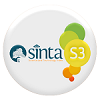HISTORY CURRICULUM DEVELOPMENT MODEL TOWARDS NATION BUILDING OF MALAYSIA
Abstract
Keywords
Full Text:
PDFReferences
Abdullah, A.S. (1998). Perubahan dan hala tuju kurikulum sejarah. Kertas Kerja Simposium Kebangsaan Ilmu Sejarah. 30-31 Oktober 1998. Anjuran Jabatan Sejarah Universiti Malaya.
Ahmad, K. Hj. (2002). Tahap pemahaman konsep dalam pembelajaran Sejarah. Tesis Sarjana: UKM
Arthur, J., & Wright, D. (2001). Teaching citizenship in the secondary school. London: Fulton.
Borwell, C. & J.Eison. (1991). Creating Excitement in the Classroom. ASHE-ERIC Higher Education Report No.1.
Booth, M. (1980). A modern world history courseand the thinking of adolescent pupils. Educational Review. 32(3), 245-257
Furnival. (1956), Kajian Tentang Kepelbagaian Etnik dan Budaya. Boston: Allyn & Bacon
Hussein Hj. A. (1985), Penggubalan Kurikulum Baru Sekolah Menengah. Pendidik dan Pendidikan 7, 1-11.
Hashim, O. (1992). Falsafah pendidikan Sejarah: Sejarah dalam pendidikan. Persatuan Sejarah Malaysia, Dewan Bahasa dan Pustaka. Kuala Lumpur.
Kementerian Pelajaran Malaysia. (2002). Huraian Sukatan Pelajaran Sejarah KBSM Tingkatan 1,2 dan 3. Pusat Perkembangan Kurikulum. Kementerian Pelajaran Malaysia.
Kember, D., K, K-P. & Ledesma, J. (2001). Conceptions of good teaching and how they influence the way adults and school leavers are taught. International Journal Of Lifelong Education, 20(5), 393-404.
Kimi, K. (1999). Kajian mengenai pengaruh, sikap, kemahiran dan pengetahuan dalam pelaksanaan pengajaran Guru Sejarah KBSM. Tesis Sarjana: UKM
Kirschner, P.A., Sweeler. J., Clark, R.E. (2006). Why minimal guidance during instruction does not work. analysis of failure of constructivist, discovery, problem-based, experiential and inquiry-based teaching. Educational Psychologist, 41(2). 75-86.
Laughlin, M. A., & Hartoonian, H. M. (1995). Challenges of social studies instruction in middle and high schools. Fort Worth, TX: Harcourt.
Meyers, C. & Jones, T.B. (1993). Promoting active learning: Strategies for the college classroom. San Francisco: Jossey-Bass.
Mayer, R. (2004). Should there be a three rule against pure discovery learning. The case for guided methods of instruction. American Psychologist 59(1), 14-19.
Surya, M. (2004). Psikologi Pembelajaran dan Pengajaran. Bandung: Pustaka Bani Qurais.
Rashid, A. (2000). Model dan pendekatan pengajaran sejarah KBSM. Kuala Lumpur. Dewan Bahasa dan Pustaka.
Rillero, P. (1994). Doing science with your children.Available:http:npin.org/library/pre1998/n00240.html
Stufflebeam, D.L., A.J. (2007). Evaluation theory, models and applications. 1ed. San Francisco: Josey-Bass A Wiley Imprint.
Toh Wah Seng. (2008). Buku Koleksi Bahan Seminar Inovasi Pedagogi IPBL Tahun 2008. Pedagogi pembelajaran aktif dalam p&p Ekonomi ke arah membangunkan modal insan.
Weiner, R.G. (1995). History: teaching and methods. ED 387 402 (Eric Document Reproduction service)
DOI: https://doi.org/10.17509/historia.v12i1.12116
Refbacks
- There are currently no refbacks.
Copyright (c) 2024 Historia: Jurnal Pendidik dan Peneliti Sejarah
INDEXED
TOOLS

This work is licensed under a Creative Commons Attribution-ShareAlike 4.0 International License.
Alamat Redaksi: Gedung Numan Soemantri, FPIPS UPI, Departemen Pendidikan Sejarah, Lantai 2, Jl. Dr. Setiabudhi No 229 Bandung, 40154






